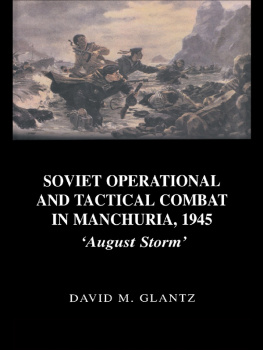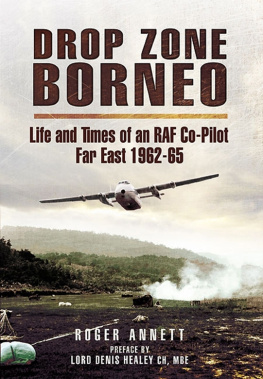
This edition is published by PICKLE PARTNERS PUBLISHINGwww.picklepartnerspublishing.com
To join our mailing list for new titles or for issues with our books picklepublishing@gmail.com
Or on Facebook
Text originally published in 1994 under the same title.
Pickle Partners Publishing 2014, all rights reserved. No part of this publication may be reproduced, stored in a retrieval system or transmitted by any means, electrical, mechanical or otherwise without the written permission of the copyright holder.
Publishers Note
Although in most cases we have retained the Authors original spelling and grammar to authentically reproduce the work of the Author and the original intent of such material, some additional notes and clarifications have been added for the modern readers benefit.
We have also made every effort to include all maps and illustrations of the original edition the limitations of formatting do not allow of including larger maps, we will upload as many of these maps as possible.
THE IA DRANG CAMPAIGN 1965: A SUCCESSFUL OPERATIONAL CAMPAIGN OR MERE TACTICAL FAILURE?
By
Lieutenant Colonel Peter J. Schifferle, USA
TABLE OF CONTENTS
Contents
TABLE OF CONTENTS
REQUEST FROM THE PUBLISHER
ABSTRACT
This monograph analyzes the effectiveness of operational campaign design during the initial US ground combat in the Vietnam War. The focus is on the linkage of national strategic ends with military means and ways from the Spring of 1965 through the results of the la Drang battles of November 1965. The monograph identifies lessons from this period that are applicable to current US Joint and Army doctrine as well as lessons for planners and executors of US military action under the American system of civilian control of the military.
First, the monograph evaluates current US doctrine for campaigns and identifies the concept of linkage of national strategic ends with military ways and means as critical to successful campaign design. Then the monograph assesses US military doctrine in 1965, identifying the weakness of unconventional warfare capabilities. A detailed discussion of the concept of both limited war and gradualism as national strategies, includes the limits on military action imposed by these strategies. Section III identifies specific military objectives identified by the National Command Authority, including preventing the war in Vietnam from escalating to a general war. The primacy of President Johnsons domestic concerns is also identified.
The monograph then assesses the effectiveness of US military campaign planning and execution in 1965. The conclusion is that the operational ways and means used by General Westmoreland in the conduct of his chosen strategy of attrition were not linked in any way with the national strategic aim of limited warfare. The monograph also identifies a failure in supervision by civilian leaders, and the Joint Chiefs of Staff, of the military planning and conduct of the air and ground campaign in South Vietnam. Too little supervision was the cause of failure, not over supervision by the civilian and military leadership.
The monograph concludes with an analysis of the lessons from 1965 that are appropriate for the post-Cold War world. The most important lesson is the need for the military campaign planner to understand the linkage between national strategic aim and military means and ways. The monograph recommends rewriting FM 100-5 to include the doctrine and capability needed by US forces to fight protracted wars. American civilian leaders may commit American forces into a protracted war either through a clear strategic choice or as a result of restrictions on the use of force.
INTRODUCTION
Campaign design is an integral and critical aspect of the operational art. The finest tactics, the best soldiers, the most modern equipment, the most competent leadership will only accomplish the national strategic objectives if linked with a sound campaign plan which addresses the requirements of the operational level of war. Today the American military is learning valuable campaign design lessons from its successes in Panama in 1989 and in the Persian Gulf War in 1991, but it appears to be ignoring operational lessons from its much more difficult failure in the Vietnam War from 1965 to 1975. This paper analyzes the campaign design for the entry of American combat forces into Vietnam in 1965, both from the perspective of current American joint military operational doctrine and from the perspective of contemporary, 1965, American military operational doctrine.
Section I reviews current U.S. military doctrine for the development of campaign plans at the operational level of war, identifying the essential ingredient of campaign design. Section II assesses the 1965 U.S. military doctrine for campaign planning, identifying strengths and weaknesses of the American, approach to operational art in 1965 from the conventional and unconventional warfare aspects Section III analyzes the strategic environment and the national strategy goals of the Vietnam involvement in the summer of 1965, identifying particular objectives assigned to the military. Section IV offers an assessment of the effectiveness and efficiency of U.S. military campaign planning in the summer of 1965, ending with the tactical battle of the Ia Drang Valley in November 1965. The last section provides several lessons from the campaign planning conducted in the summer of 1965, and offers recommendations for current U.S. military campaign planners.
The entry of American combat forces into South Vietnam in the summer of 1965 began Americas longest war, a war that killed more than fifty five thousand Americans, destroyed two American Presidential administrations, and ended in the loss of South Vietnam to the Communist government of the North. It also effectively destroyed the American military as a potent force for nearly a decade. To run the risk of inadequate campaign planning in the near future is to run the risk of similar outcomes with a price America, in the New World Order, may not be able to bear.
THE ART OF CAMPAIGN DESIGN-1994
Current US Army doctrine is flawed. FM 100-5 . the June 1993 edition, clearly states the need for quick, decisive victory... anywhere in the world and under virtually any conditions. {1} Joint doctrine, the doctrine written under the authority of the US Armed Forces Joint Staff, has also embraced this concept. {2} This doctrine that quick, decisive wars are the goal of the US armed forces may ignore a type of war likely to be waged by the very political system the American armed forces have sworn to support and defend.
Future war will not necessarily be limited to just coup de main actions like Panama in 1989 or the public image of the seemingly video-game conflict of the Persian Gulf War in 1991. The future is instead the interplay of political and military factors, the routine subordination of military decisions to political requirements, and the inherent lack of clear and consistent goal development by the American political leadership. Additionally, future wars are at least as likely to be fought by one side striving for a protracted struggle as they are to be waged by both sides striving for rapid victory. The future may indeed not be the future of coherent nation states waging decisive war, but the future of a clash of civilizations or the coming anarchy of nation-less groups and cultures struggling for survival. {3} Given the current doctrine of the American armed forces, these forces are insufficiently prepared for the actual spectrum of future warfare.







